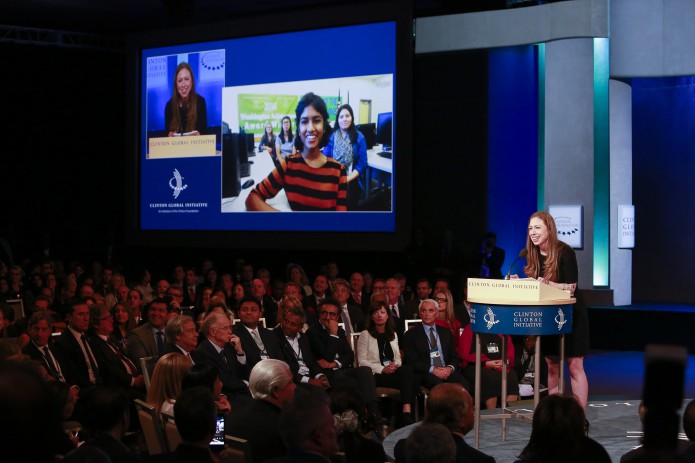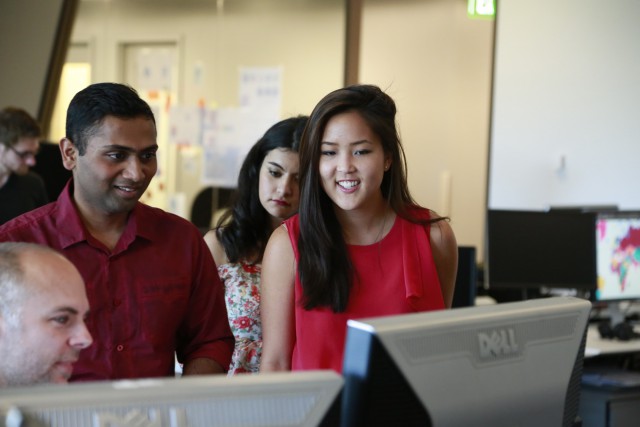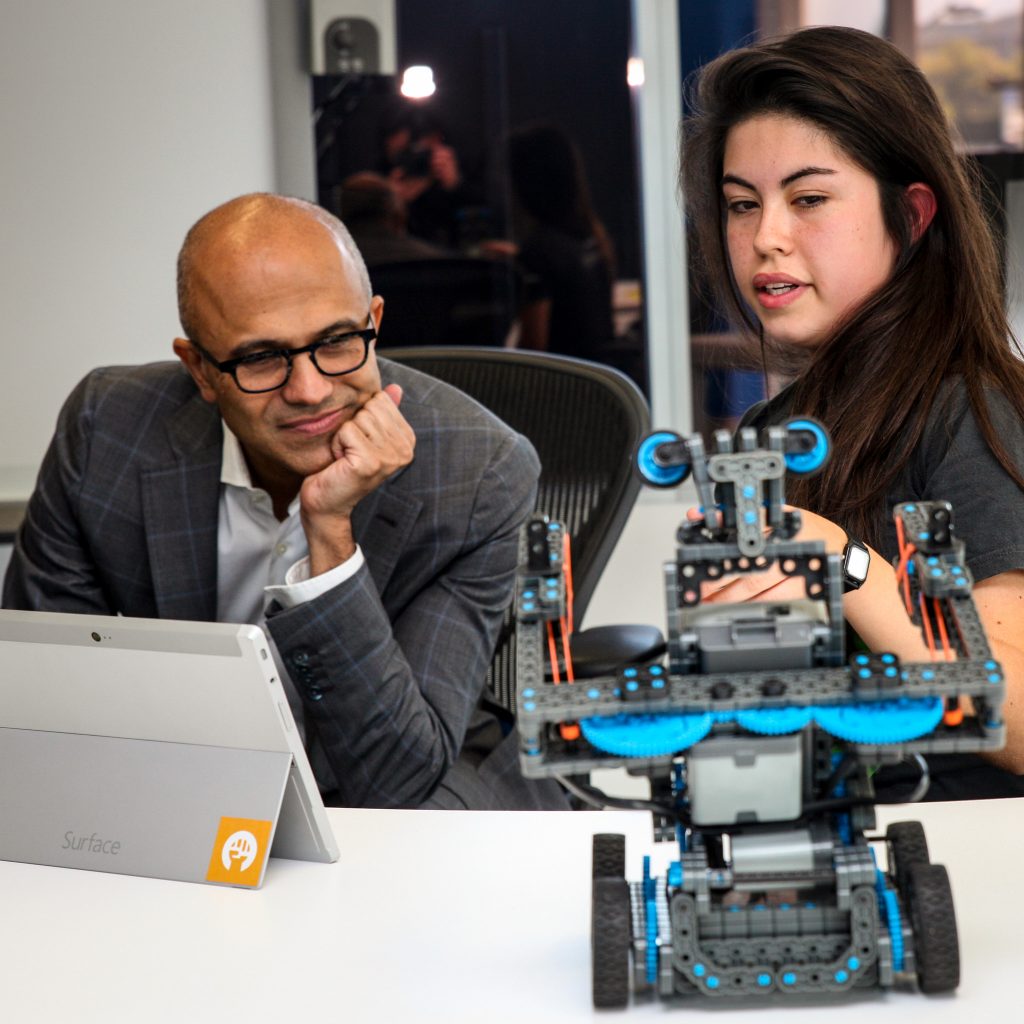A lot of cool stuff happened this week, so let’s dig in!
Microsoft’s /stories team published “Inside B87,” a rich, immersive look at what’s behind the nondescript exterior of Microsoft’s Building 87 in Redmond, Wash. Turns out it’s some of the world’s top hardware labs, where brilliant minds are transforming visions of tomorrow into tangible technology. Peek inside the futuristic labs to explore the world’s quietest room, a human-sized light box and industrial sewing machines for smart fabrics.
The all-new Microsoft JobsBlog introduced us to the fun team behind Cortana’s wit and personality. The team includes recent grads still pinching themselves for landing their dream job of laughing with colleagues while working on a product that reaches billions of people.
“This is super nerdy and geeky, but there are days when I was working on this project when I would drive back home fist-pumping and screaming, ‘This thing is coming to life! Cortana is turning into a reality — and I’m on it,’” said Mouni Reddy, program manager for the Cortana personality team. “It really is unbelievable.”
In Nepal, Microsoft has partnered with the United Nations to help the country recover from the devastating earthquake that struck in April. With Windows Phone and a custom-built, Azure-based solution, local engineers have assessed more than 600,000 damaged buildings and been able to store essential records in the cloud. The technology has the potential to change the way the world copes with disasters.
“We can revolutionize the entire global response to disasters,” said Jamie McGoldrick, UN resident coordinator in Nepal. “With a cell phone, we can change the world.”
In California, Microsoft reinforced its commitment to helping create smarter cities, by being a capstone sponsor of the annual Code for America summit. The nonprofit Code for America uses open-source, civic technology to help citizens and local governments, from putting local traffic info online to helping food stamp recipients track their benefits.

Microsoft also reinforced its commitment to helping make computer science education accessible for all youths. The company participated in the annual Clinton Global Initiative meeting in New York and said it has reached its goal of delivering more than 300 million opportunities to youths around the world. Previously, Microsoft announced plans to expand its YouthSpark initiative with a $75 million commitment over the next three years.
The company also kicked off its Employee Giving Campaign, a massive annual effort that supports nonprofits and schools around the world. Microsoft matches each employee donation dollar for dollar, as well as contributing $25 for each hour an employee volunteers.
“Now, as we aspire to empower every person and every organization on the planet to achieve more, our employee giving program plays a key role, generating more than $100 million in donations of time and money — each year — to nearly 20,000 nonprofits worldwide,” wrote Lori Forte Harnick, general manager of Microsoft Citizenship and Public Affairs.
 If you love cute gifs and cool facts, you’ll like the new Microsoft by the Numbers site, a quick look at how Microsoft is helping people achieve more. Did you know that Skype Translator can translate calls in six languages and instant messages in 50 of them? Or that more than 1.5 million young people from 190 countries have competed in Microsoft’s Imagine Cup? There’s quirky stuff, too. Bet you don’t know many French fry orders Microsoft employees eat in a year. Find out and impress your friends.
If you love cute gifs and cool facts, you’ll like the new Microsoft by the Numbers site, a quick look at how Microsoft is helping people achieve more. Did you know that Skype Translator can translate calls in six languages and instant messages in 50 of them? Or that more than 1.5 million young people from 190 countries have competed in Microsoft’s Imagine Cup? There’s quirky stuff, too. Bet you don’t know many French fry orders Microsoft employees eat in a year. Find out and impress your friends.
And lastly this week, Microsoft CEO Satya Nadella visited Latin America to see how technology and entrepreneurship are transforming lives. He took over the Microsoft Instagram account with photos and insights from his trip, where he met young entrepreneurs and innovators making a positive impact on their communities with technology.
Thanks for reading and see you next week!
Vanessa Ho
Microsoft News Center Staff



